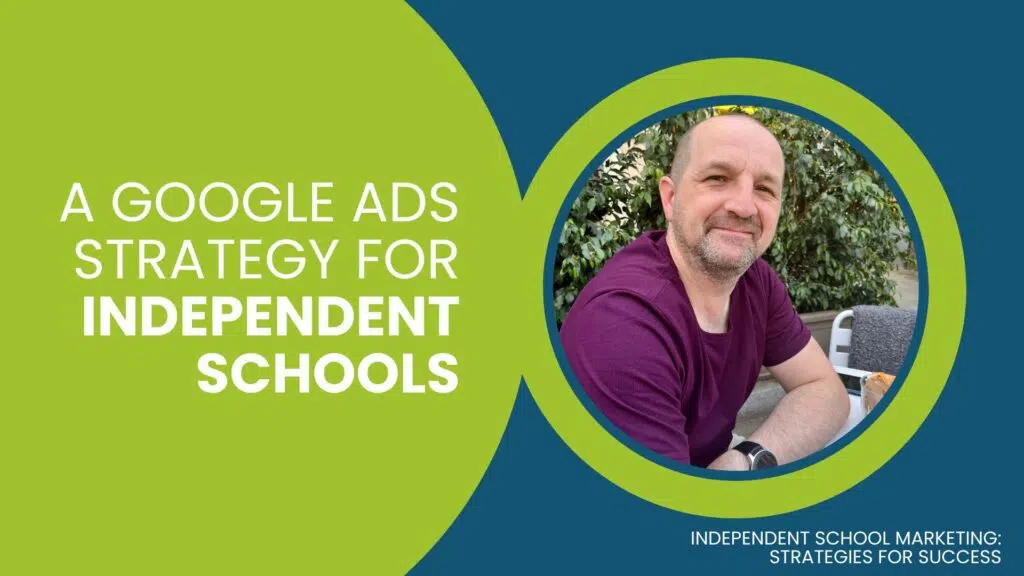Google Ads can be a powerful tool for independent schools to boost their enrolment numbers and reach prospective students effectively. Running successful Google Ads campaigns requires a strategic approach and a deep understanding of the platform’s features and capabilities. In this guide, we will explore the key strategies for mastering Google Ads and driving enrolments for your independent school.
Understanding Google Ads for Independent School Marketing
Before diving into campaign optimisation techniques, it’s crucial to understand the fundamentals of Google Ads and how they apply to independent school marketing.
Google Ads provides various campaign types, including:
- Search
- Display ads
- Video ads
The different ad networks allow schools to reach their target audience across different platforms and formats.
Google Search Ads target users as they’re actively searching for a private or independent school in your location. This is best to use all year round, but especially when you’re promoting open days.
The Google Display Network expands reach, enabling schools to showcase their ads on partner websites, on YouTube and on mobile apps. This channel is best to use to create awareness of your school or an open day, targeting parents, or targeting recent visitors to your website.
Video Ads can show on YouTube and/or across the Google Display network, helping to create brand awareness and trust in your school. This is best to use when you want to deliver richer, more detailed messaging to your target audience and again, can be effective in driving open day attendance.
To maximise the impact of your Google Ads campaigns, it’s important to familiarise yourself with the available targeting options, ad formats, and bidding strategies. By selecting relevant keywords and audience segments, you can ensure your ads are displayed to the right people at the right time.
Optimising Google Ads Campaigns for Independent Schools
To drive enrolment for your independent school, it’s essential to optimise your Google Ads campaigns effectively. Here are some key strategies to consider:
- Conversion Tracking: Before spending any budget on Google Ads, it is essential that you implement Google Ads conversion tracking in order to measure the results from your campaigns and to be able to improve and scale performance. Conversions are likely to include; open day registrations, enquiries and telephone calls.
- Targeting the Right Keywords: Conduct thorough keyword research to identify the search terms prospective parents and students are using. Focus on long-tail keywords that reflect specific interests and intent, such as “best independent schools in [location]” or “enrolment process for private schools.” Learn more: [Video] Google Ads Keyword Match Types
- Creating Compelling Ad Copy: Craft compelling and relevant ad copy that highlights your school’s unique selling points, such as academic excellence, extracurricular activities, or specialised programs. Use persuasive language and a clear call-to-action to encourage clicks.
- Using Ad Extensions: Take advantage of ad extensions to enhance your ad’s visibility and provide additional information to potential enrolees. Consider using site links, call extensions, or structured snippets to showcase unique features, contact information, or relevant page links.
- Monitoring and Optimisation: Regularly monitor your campaign performance, including click-through rates, conversion rates, and cost-per-click. optimise your ads by pausing underperforming keywords, testing different ad variations, and adjusting your bidding strategy to maximise ROI.
Popular Education Marketing VideosPopular Education Marketing Videos
Regular Optimisation Techniques for Scaling Performance and Increasing Campaign ROI
To continuously improve the performance of your Google Ads campaigns and achieve a higher return on investment (ROI), it’s essential to regularly optimise your campaigns. Here are some important techniques to consider:
- Keyword Performance Review: Regularly review the performance of your keywords to identify high-performing and low-performing ones. Pause or adjust bids for keywords that are not generating sufficient clicks or conversions, and allocate more budget to keywords that are driving results.
- Ad Copy Testing: Conduct A/B testing with different ad variations to identify which ones resonate best with your target audience. Test different headlines, descriptions, call-to-action phrases, and display URLs to optimise your ad copy and maximise click-through rates.
- Bid Management: Adjust your bids based on the performance of your keywords, ad groups, and campaigns. Increase bids for top-performing keywords to ensure they maintain a prominent position, while reducing bids or pausing keywords that are not generating desired results.
- Negative Keywords Optimisation: Continuously refine your negative keyword list to prevent your ads from showing for irrelevant search queries. Regularly review search term reports to identify irrelevant queries triggering your ads and add them as negative keywords to improve targeting precision.
- Ad Extensions Optimisation: Monitor the performance of your ad extensions and make adjustments accordingly. Test different extension types, such as sitelinks, callouts, or structured snippets, to see which ones generate higher click-through rates and conversions.
- Landing Page Optimisation: Continuously optimise your landing pages to improve the user experience and increase conversion rates. Ensure that landing pages are aligned with the ad copy, load quickly, and provide clear calls-to-action and relevant information.
- Device and Location Targeting: Analyse the performance of your campaigns across different devices and locations. Adjust bids and targeting settings to focus on the devices and locations that generate the highest conversion rates and ROI.
- Ad Schedule Optimisation: Review the performance of your campaigns based on the time of day and day of the week. Adjust your ad scheduling to allocate more budget during peak conversion periods and reduce spending during less effective timeframes.
By implementing these regular optimisation techniques, you can fine-tune your Google Ads campaigns, improve performance, and increase your campaign’s ROI over time.
Remember to monitor the performance metrics regularly, such as click-through rates, conversion rates, and cost-per-conversion, to assess the impact of your optimisation efforts and make data-driven decisions for further improvements.
With these optimisation techniques, you can scale the performance of your Google Ads campaigns and achieve a higher ROI for your independent school marketing.
Real-life case studies and success stories can provide valuable insights and inspiration for your independent school marketing efforts.
For more information, you can explore the following resources:
- 5 Reasons Why Your School Should Be Using Google Ads: Discover how Google Ads helped a private school increase enrolment and improve their online presence.
- Education Case Studies: Explore Tillison Consulting’s education case studies to see how other schools leveraged Google Ads for successful enrolment campaigns.
- Google Ads Agency for Schools: Hire an experienced Google Ads agency with a history of success with campaigns for independent/private schools.
Google Ads is a critical component of a private school’s enrolment success. Understanding the platform’s fundamentals, optimising your campaigns with targeted keywords and compelling ad copy, leveraging ad extensions, and continuously monitoring and optimising your performance will help you maximise the impact of your Google Ads campaigns.










